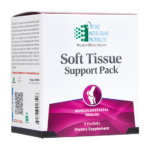A Pillar Of Functional Medicine Is Reducing Inflammation, A Symptom of Chronic Illness
Functional Medicine teaches us that the “root cause” of many and varied chronic illnesses is inflammation.
Inflammation is brought on by the “exposome” — which is everything we are exposed to, from highly processed foods to toxins in our environment, and even the mental stimulation we receive from the news we see and read.
Injuries and infections can produce “acute” inflammation, the body’s quick response to getting rid of a dangerous offender to get the body back in balance. But if we’re constantly faced with these foreign invaders, it can lead to chronic inflammation that’s behind various conditions and diseases.
Laboratory science shows inflammation is not an esoteric concept, or simply an idea. It is measurable and quantifiable — providing proof of concept.
There are parameters for inflammation that can be described in specific terms. These values can be followed as a measure of response, and some of them include the ESR (erythrocyte sedimentation rate) and C-reactive protein.
Functional Medicine 411’s Shop carries a range of supplements that work to reduce inflammation in the body.
In previous Learning Centre articles, we have discussed the dangers and importance of various components of the inflammatory cascade, many of which can be gauged to assess the inflammatory response:
- ROS: Reactive oxygen species, which can create widespread cellular damage. (Read more on ROS in this article that’s part of our Green Tea series).
- iNOS: Inducible nitric oxide synthase, this enzyme creates the production of nitric oxide, which is pro-inflammatory. It can be suppressed or stimulated, and is quantifiable.
- Cytokines, which begin the inflammatory cascade and are also measurable.
As part of maintaining my Board Certification as a Radiation Oncologist, I recently read an article on the role of low-dose radiation in the treatment of osteoarthritis (OA). The full scope and details of this 2022 review article published in the International Journal of Radiation Oncology Biology and Physics are beyond this article. However, the benefits of radiation for OA are due to the anti-inflammatory effects.
Low-dose radiation has been used widely for many years in Europe as a safe and effective treatment for OA. The article details the anti-inflammatory processes that follow the radiation to help alleviate both the pain and immobility that can come with OA. I find one of the most fascinating parts of this review is the details of an ongoing study, titled “Immunophenotyping From Blood of Patients Suffering From Chronic Degenerative Joint Diseases and Receiving LDRT (IMMO-LDRT01).” LDRT, which is low-dose radiation therapy, is administered in a double-blind manner to patients with OA — which is a chronic inflammatory condition and one of the “itises” that affect the human population. The patient’s subjective response to pain is assessed, but the trial has an objective measure as well.
The peripheral blood of patients is analyzed to evaluate the down-regulation of activated systemic immune cells by directly measuring the expression of known (immune) activation markers, such as CD 25 (cellular differentiation antigen 25) and Human Leukocyte Antigen-DR (HLA-DR). This report excites me as both a Radiation Oncologist and Functional Medicine physician, because this treatment may benefit people living with OA, which affects 32 million Americans alone. The World Health Organization says 528 million people globally were living with OA in 2019, but the condition is NOT an “inevitable consequence of aging.”
The 2022 report in the International Radiation Oncology Journal shows reducing inflammation, one of the “pillars” of Functional Medicine, is a measurable quantity, but is also part of a scientific trial involving a sub-specialty of standard medicine!
Inflammation as both cause and effect of chronic disease continues to be studied and validated, in a variety of settings.
On a personal note, when I eat inflammatory foods, the OA in my right forefinger certainly reminds me of this!




